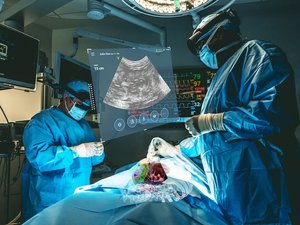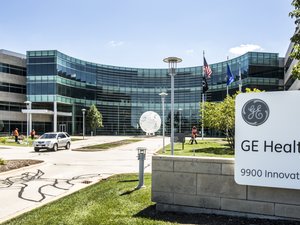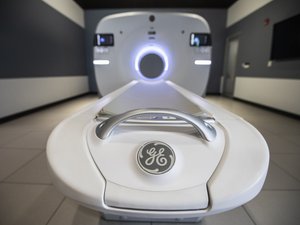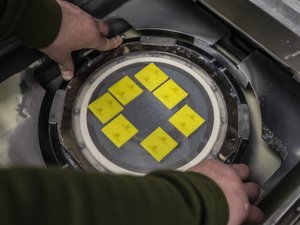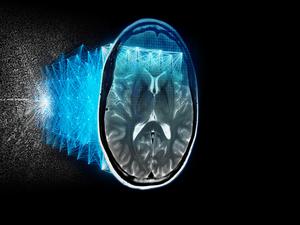
GE HealthCare’s Waukesha-based magnetic-resonance imaging (MRI) business is preparing to launch an artificial intelligence-enhanced software the company says reduces, by up to 83%, the time necessary for the tedious and unpleasant scanning experiences of patients and caregivers.
The company will begin shipping the new Sonic DL technology in the second half of this year, Jie Xue, president and CEO of GE HealthCare’s MRI business, told the Milwaukee Business Journal. The software will serve as an upgrade to the company’s MRI units already at customer sites and will be included on newly manufactured MRI systems, Xue said.
The FDA recently cleared the new technology that GE HealthCare describes as a breakthrough in its recent emphasis on AI-enabled solutions in its product portfolio.
![Xue, Jie (3)[1]](https://media.bizj.us/view/img/12540538/xue-jie-31*540xx1245-1661-0-86.jpg)
Two-thirds of the GE HealthCare MRI team that developed Sonic DL technology is based in Waukesha, a company spokeswoman said. The company has over 500 employees in the MRI unit in Waukesha, which is part of GE HealthCare's $10 billion imaging business and includes executives, design engineers, marketers and quality and regulatory professionals, Xue said.
GE HealthCare (Nasdaq: GEHC) initially is targeting imaging for patients with cardiovascular disease, which is the most challenging part of the human anatomy to capture, Xue said. Patients typically are asked to attempt holding their breath for up to eight seconds, which can be difficult due to their condition, and Sonic DL requires only about one second, she said.
The new deep-learning software doesn’t need to acquire as much data to build equivalent or better images as required by current technology, Xue said.
“We think this will fundamentally make it a whole lot easier on patients and on the caregivers,” Xue said.
Clinicians choose MRI scans only if absolutely necessary to capture detailed information on how well a patient’s heart is pumping, how well the valves work and the flow of a patient’s blood, Xue said. The sessions can last 45 minutes to two hours and sometimes need to be repeated because the images are too blurry, she said.
Sonic DL works on 99% of human anatomy but GE HealthCare executives chose cardiac imaging as a starting point for sales because it’s the most challenging and pressing need for less time-consuming sessions, Xue said.
“Our MR system is fantastic except it’s just too slow for a beating heart,” Xue said. “This technique accelerates the speed so we can now make a cardiac image with eight to ten beats down to one.”
Cardiac scans represent only 3% to 4% of the MRI market, Xue said. She anticipates the new technology will increase adoption of scans via MRI.
Clinicians also conduct cardiac scans with computed tomography (CT) and ultrasound but those procedures don’t provide details on certain aspects of heart functions as MRI scans, Xue said.
As part of the clinical validation that GE HealthCare needed for the FDA clearance, the company collaborated with academic institutions including UW-Madison, Xue said.
A video promoting Sonic DL at trade shows says it represents GE HealthCare's "vision for light-speed imaging."
Sonic DL is the second major AI deep-learning launch for magnetic resonance from GE HealthCare, Xue said.
The previous technology introduced in 2019 is called Air Recon DL, which the company also deployed for existing and new MR systems. Air Recon DL also improved image sharpness and shortened scan times by up to 50%, the company said.
Air Recon DL has been a successful product for the company with over 3,300 orders installed on 2,200 scanners that benefited millions of patients, Xue said.
“It got our customers comfortable in adopting AI and DL (deep learning) in everyday patient care,” she said.
GE HealthCare's corporate headquarters is in Chicago. The company has over 5,000 employees in southern Wisconsin including sites in Waukesha, Pewaukee, Wauwatosa, Oak Creek, West Milwaukee and Madison.
